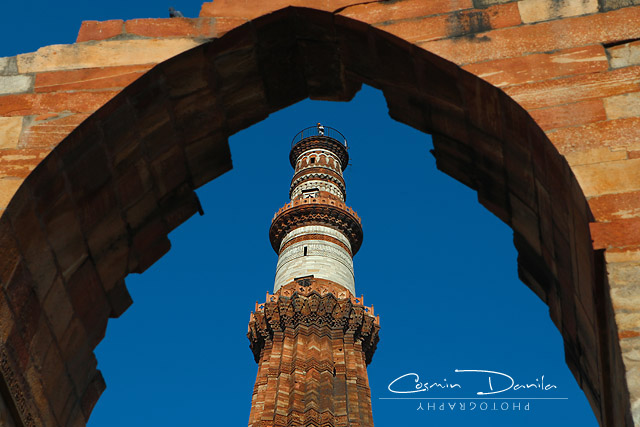I've spent only a few short days in Delhi and, as a photographer, this is more hurtful than helpful. Hopefully, I'll have a chance to redeem myself in the future. Till then, here's just a tiny teaser of what India's capital has to offer.
The Red Fort (Lal Quila or Lal Quil'ah) was built by Mughal Emperor Shah Jahan.
The construction of the fort complex lasted 10 years and was completed in 1648.2 kms of red sandstone walls surround what used to be the vital center of Mughal governance: halls of public and private audiences, domed and arched marble palaces, private apartments, a mosque, and elaborately designed gardens.
Renovation works are underway:
Old Delhi:
Another one of the great Shah Jahan's architectural masterpieces, Jama Masjid is the largest mosque in all of India:
Built between 1644 and 1656 in the center of Old Delhi, it can accommodate up to 25000 devotees.
Fatehpuri Masjid (Mosque) is located at the western end of the oldest street in Delhi - Chandni Chowk:
It was erected in 1650 by Fatehpuri Begum, one of Shah Jahan's wives.
Situated in the first of the seven cities of Delhi, Qutb Minar (also Qutub Minar) is the tallest minaret in India with a height of 72.5 meters (237.8 feet). It tapers from 14.32 m in diameter at its base to 2.75 m at the top:
Called the pride of Delhi, it's supposedly India's most visited monument.
The tower was constructed with red sandstone and marble. The work was started in 1192, by the first Muslim ruler of Delhi - Qutbud-din Aibak.
His successor and son-in-law, Iltumish, completed the this fine example of Indo-Islamic architecture.
Qutb Minar is a UNESCO World Heritage Site since 1993.
Funerary buildings, like Iltutmish's tomb, are in the immediate vicinity:
My favorite place in Delhi and probably the most remarkable structure I've ever seen - Jantar Mantar:
Literally translated "instrument and formula", also called Jantra Mantra, this complex of 13 architectural astronomy instruments is one of the 5 observatories built by Maharaja Sawai Jai Singh II of Jaipur.
It dates back to 1724 and is a national monument since 1948.
I simply can't wait to go back and spend more time in Delhi!
travel.learn.more.cosmin
Pin It




























Amazing pictures!! What a mood captured here! Just shared it to my facebook :-)
ReplyDeleteYour pictures make me want to pack and...just go!!
ReplyDeleteGreat work!
Thank you so much, guys! Hope you enjoyed the Delhi trip! :)
ReplyDeleteCos. What to say, yust WAUUUUUUUUUUUUUUUUUUUUUUUUUUUUUUUUUUUUUUUUUUUUUUUUUUUUUUUUUUUUUUUUUUUUUUUUUUUUUUUUUUUUUUUUUUUUUUUUUUUUUUUUUUUUUUUUUUUUUUUUUUUUUUUUUUUUUUUUUUUUUUU on thrd!!! Lucky bastard... hehehe
ReplyDeleteThanks so much, Rado! I'm glad you're coming with me in my travels! :)
ReplyDelete